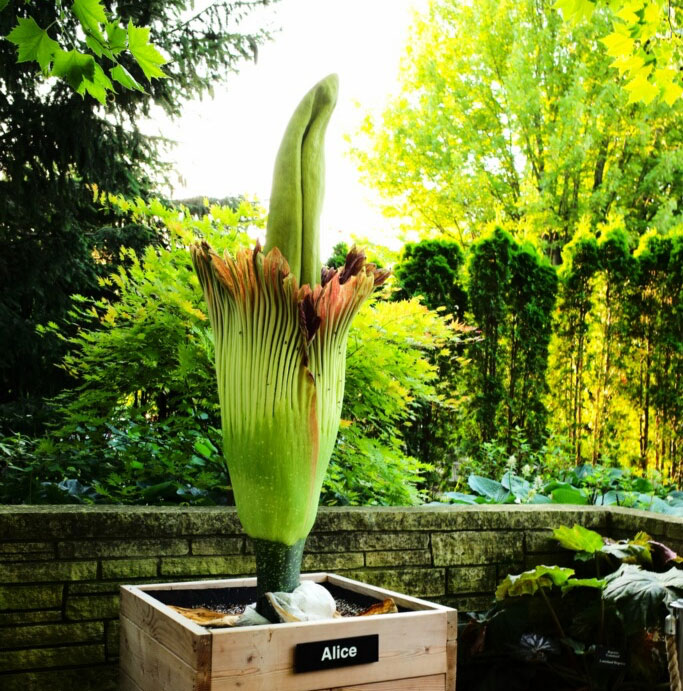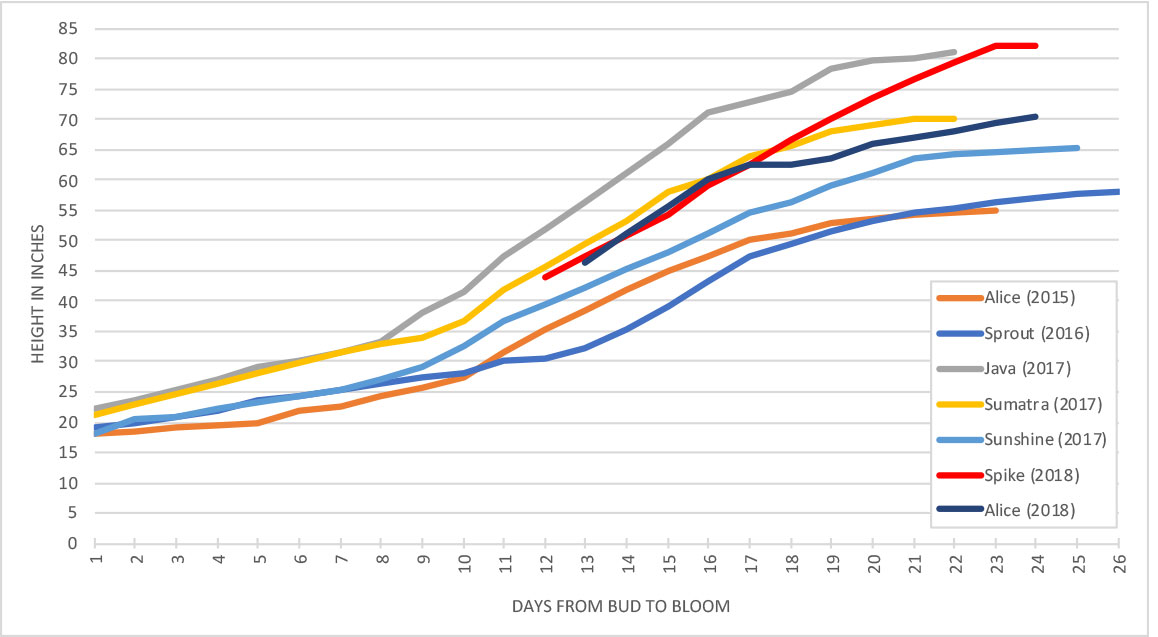On June 29, 2018, Alice the Amorphophallus went back into full, crazy beautiful bloom at the Chicago Botanic Garden. You might remember Alice: our second titan arum (or corpse flower) to enter its bloom cycle at the Garden, and the first corpse flower to bloom at the Garden in 2015.

The corpse flower, or titan arum (Amorphophallus titanum), is native to the rainforests of Indonesia. In bloom, it is known for its size, stench, and beauty—look for the deep crimson color of the frilly spathe, or modified leaf, around the tall central spike.
What has been happening with Alice the Amorphophallus since it first bloomed?
After Alice bloomed on September 28, 2015, Garden scientists collected pollen from the plant. They saved the pollen for future pollination of other titan arums in the Garden’s collection and to donate to other botanic gardens and universities. After a successful pollination, Alice produced fruit. Each of Alice’s orange-red, olive-shaped berries produced a single seed, and the seeds were collected. These seeds contribute to vital titan arum conservation efforts at the Chicago Botanic Garden and other scientific institutions.
What’s different about Alice the Amorphophallus this time?
We’re displaying Alice the Amorphophallus outside, like we did last summer with Sunshine (our other titan arums have been displayed in the Semitropical Greenhouse). Our scientists and horticulturists want to see how Alice does—with fresh air, Chicago’s unpredictable summer weather, and sun—compared with our other titans that were raised indoors. We’ll also track Alice’s growth and development, and compare those numbers to last time.
What has been happening with Alice the Amorphophallus since it first bloomed?
After Alice bloomed on September 28, 2015, Garden scientists collected pollen from the plant. They saved the pollen for future pollination of other titan arums in the Garden’s collection and to donate to other botanic gardens and universities. After a successful pollination, Alice produced fruit. Each of Alice’s orange-red, olive-shaped berries produced a single seed, and the seeds were collected. These seeds contribute to vital titan arum conservation efforts at the Chicago Botanic Garden and other scientific institutions.
Didn’t you just have a corpse flower in bloom?
Yes, Spike bloomed in April 2018 (see our corpse flower family yearbook below). Spike was our first corpse flower to go on bloom watch in September 2015. Spike lacked the energy to bloom in 2015, but had a heroic return earlier this year when it finally bloomed.
How often do these plants bloom?
A corpse flower in bloom is rare, both in the wild and in the world of horticulture. At botanic gardens and arboreta around the world, titan arums have only recently been coaxed into bloom after ten or more years of careful cultivation. The Garden began collecting titan arums in 2003, as part of a worldwide conservation effort to preserve the species. Many of our titans were acquired at the same time, which is why the Garden has had several of them ready to bloom in a short time period.


